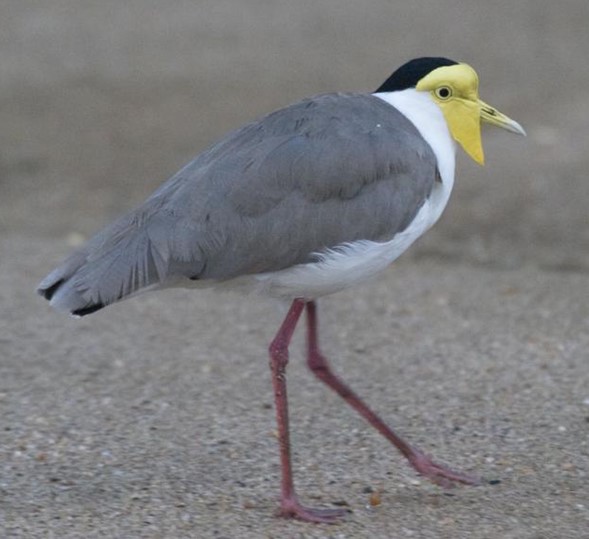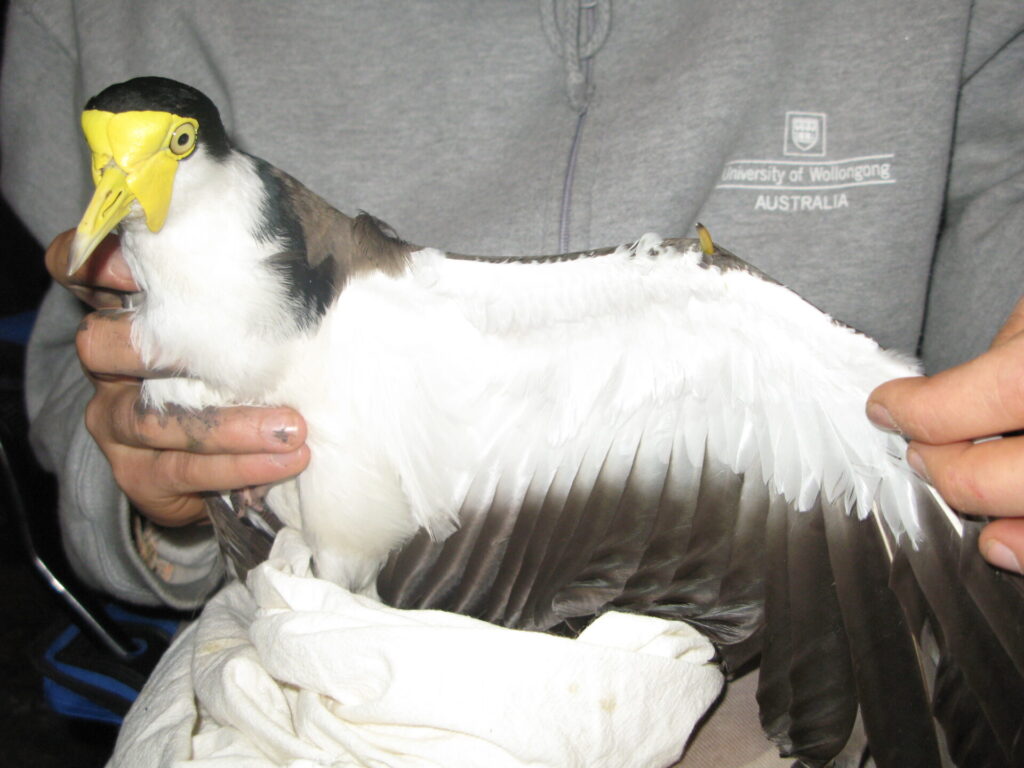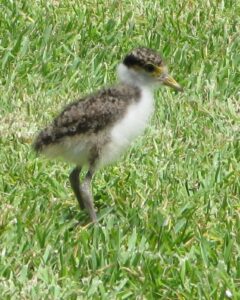The Masked Lapwing (Vanellus miles) is an Australian resident wader species, which ranges across Australia and Papua New Guinea, though is missing from the Australian arid interior. Over time this range has expanded, within Australia moving into Western Australia both from the north and south, plus into other countries, including New Zealand, in the 1930s, and New Caledonia in the 1994.

There are two sub-species recognised, Vanellus miles miles for the northern subspecies and Vallenus miles noveahollandiae for the southern form. These subspecies were once considered to be two distinct species, known as the Masked Lapwing and the Spur-winged Plover, but were combined into a single species in the 1950s (Bock 1958)
What are the differences between miles and noveahollandiae? V.m. novahollandiae differs by:
- Facial lappets much smaller.
- Black cap joins at the nape and extends around the lower hindneck and onto the sides of the breast.
- Upperparts and upper wing-coverts of adults and immatures, darker with more brown.
- Underparts, white but with black marking at sides of breast.
- Pale diagonal bar of upperwing (juveniles, immatures, adults), white contrasting less boldly.
- Carpal spur has black tip.
- Culmen of adults has dark tip present.
- Feet and legs look less red than miles.
- Larger and bulkier than miles.

The Masked Lapwing’s habitat is that of open areas that are closely adjacent to water. So natural areas of short grassland alongside waterways, plus open areas associated with estuaries, mud-flats, marshes etc. are frequently used and favoured. This results in a patchy distribution, which matches suitable habitat. There is also a very strong association of this species to human activity and structures, and can be found near to parks, farms, roadside clearing and train lines, also industrial sites, salt-works and gravel pits. It is unlikely to be seen in timbered areas. If water is available this species can be found in arid areas.

Opportunistic breeder. Monogamous on long-term basis; very faithful to breeding site. Usually nests in short grass, often near water; nest is depression in ground, unlined or lined with plant material, pebbles and debris. Clutch 4 eggs, sometimes 3; incubation 28–30 days; chick has upperparts pale brown speckled buff and mottled black, white hindneck collar, underparts mostly white; young can swim from early age; fledging usually 6–7 weeks.
Though considered to be a resident species, there is some dispersal during wet seasons, but this depends on the amount of rainfall. They have been seen to flock in autumn and winter but no regular large movements have been observed.
ABBBS records show the average distance travelled before recovery is 4kms, with the maximum distance being 149kms. The fact that this species’ range has been expanding to New Zealand and Lord Howe Island, and other Pacific islands means that there must be some bigger movements occurring.
During a personal trip along the east coast of Queensland, the author observed Masked Lapwings (Vanellus miles) that displayed a mix of characteristic from the two subspecies. Some were extralimital to the historic zone of intergradation being given to be from Mackay to Townsville (van Tets 1967). The term intergradation has been used in order to distinguish that there is breeding within a species i.e., between subspecies, rather than between differing species. This intergrade zone was from Carmilla in the south to south of Cardwell in the north.


